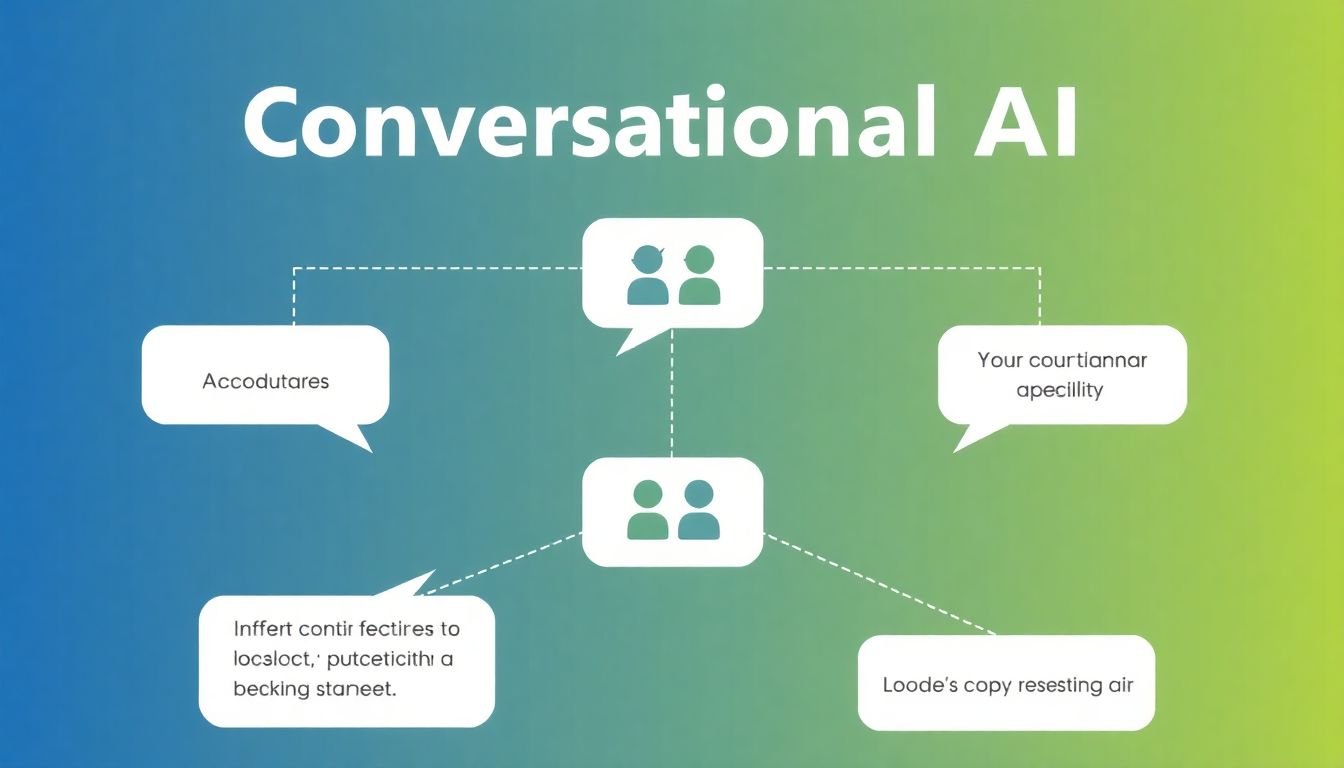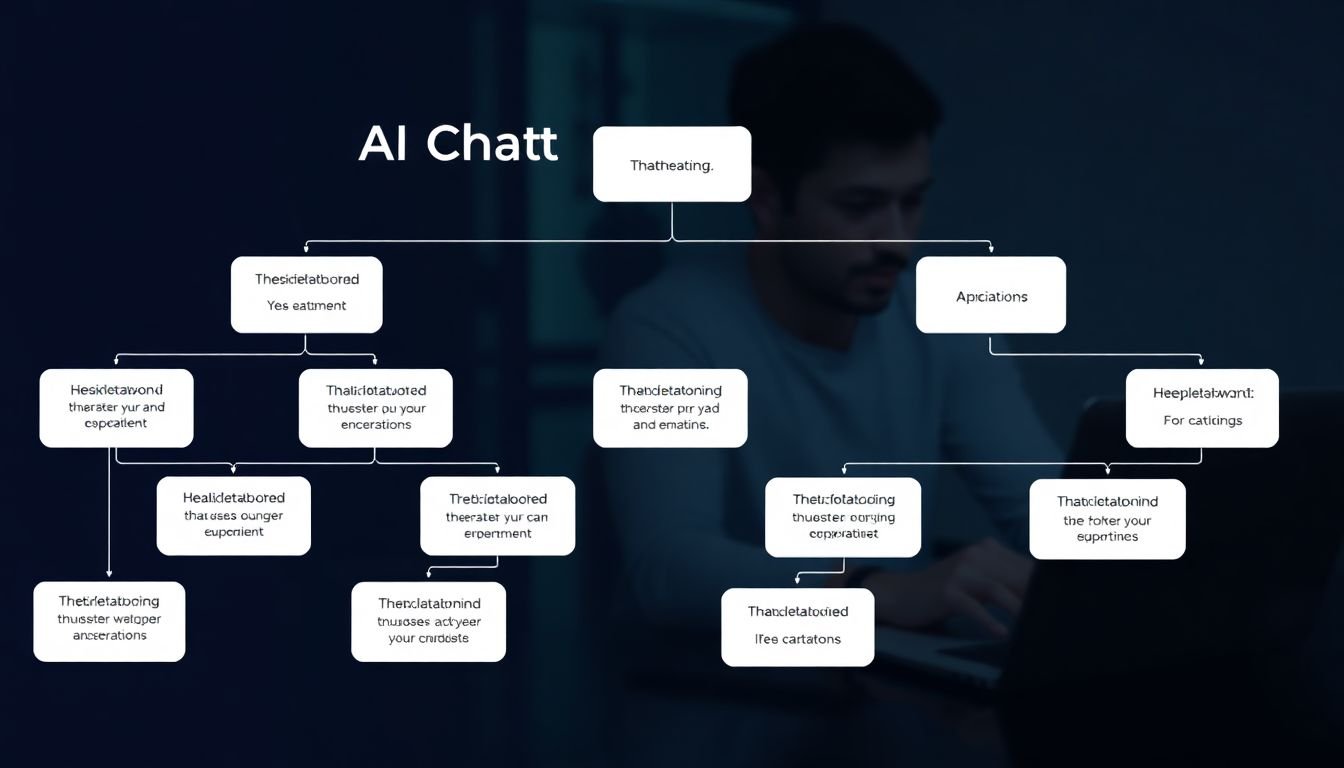
Table of Contents
In the digital age, customer service has evolved from a one-way communication channel to a dynamic, interactive experience. But with great evolution comes great challenge
- how do we, as businesses, keep up with the ever-growing expectations of our customers? Enter AI chatbot development, a game-changer that’s transforming customer service landscapes worldwide. But here’s the million-dollar question: are you leveraging this technology to its full potential? Let’s delve into the fascinating world of conversational AI and explore how it can boost your customer satisfaction rates by an astounding 70%.
Did you know that by 2025, the global chatbot market is expected to reach a staggering $9.4 billion, growing at a CAGR of 29.7% during the forecast period? This exponential growth is no coincidence. AI chatbots are not just a trend; they’re a necessity, a powerful tool that’s redefining customer service. But here’s the thing
- building an AI chatbot is not enough. It’s like having a state-of-the-art car without knowing how to drive. You need to know how to develop, train, and optimize these AI chatbots to truly harness their power.
So, what if we told you that you can increase your customer satisfaction rates by 70% with the right AI chatbot development strategy? Sounds too good to be true, right? Well, it’s not. In this article, we promise to demystify AI chatbot development, providing you with a comprehensive guide that will help you create conversational AI that’s not just efficient, but also engaging and effective. We’ll explore the latest trends, share real-life success stories, and provide practical tips that you can implement immediately.
By the end of this article, you’ll have a clear understanding of how AI chatbots can revolutionize your customer service, and more importantly, you’ll have the knowledge and tools to make it happen. So, are you ready to join the next generation of customer service? Let’s dive in!
Revolutionizing Support: AI Chatbots for Next-Level Customer Satisfaction
In the dynamic landscape of customer service, the advent of AI chatbots has sparked a revolution that’s redefining the way businesses interact with their clients. These digital powerhouses, fueled by advanced machine learning algorithms, are more than just a novel addition; they’re a game-changer, transforming the support experience into a seamless, efficient, and delightful journey. Imagine, if you will, a world where customer queries are addressed in real-time, 24/7, by a patient, knowledgeable, and always polite assistant. AI chatbots are making this world a reality. They understand context, learn from each interaction, and provide personalized solutions, making every customer feel heard and valued. They’re not just answering questions; they’re anticipating needs, predicting trends, and driving customer satisfaction to new heights. With AI chatbots, businesses can handle a larger volume of queries, freeing up human agents to tackle complex issues, leading to a more productive and balanced support ecosystem. It’s not about replacing human interaction, but augmenting it, creating a symbiotic relationship that benefits both customers and businesses alike. The future of customer support is here, and it’s powered by AI chatbots, ready to revolutionize the way we understand and serve our customers.

The Rise of AI Chatbots in Customer Service
In the dynamic landscape of customer service, a silent revolution is underway, orchestrated by the rise of AI chatbots. These digital entities, powered by advanced natural language processing and machine learning algorithms, have evolved from simple rule-based systems to sophisticated, context-aware conversational agents. Today, AI chatbots are not just a novelty but a staple in customer service, transforming traditional support systems at an unprecedented pace.
The current state of AI chatbot development is marked by remarkable advancements. Chatbots can now understand intent, maintain context across conversations, and even learn from each interaction. They’re equipped with APIs that integrate seamlessly with various platforms, from websites and mobile apps to messaging services like Facebook Messenger and WhatsApp. Moreover, they’re becoming more human-like, employing sentiment analysis to understand emotions and respond empathetically.
AI chatbots’ increasing role in customer service is evident in their expanding use cases. They’re the first line of support for many businesses, handling simple queries and providing 24/7 availability. For instance, Bank of America’s Erica, an AI-powered virtual assistant, has helped millions of customers with tasks like checking balances, transferring funds, and paying bills. Similarly, KLM Royal Dutch Airlines uses AI chatbots to provide flight updates, booking information, and even send boarding passes directly to customers’ Messenger apps.
However, AI chatbots aren’t just about efficiency; they’re also transforming customer experiences. They provide personalized interactions, learning from customer preferences and behaviors to offer tailored recommendations. They can also handle complex tasks, like troubleshooting technical issues or guiding customers through intricate processes. For example, the cosmetics brand Sephora uses its Virtual Artist AI to provide personalized makeup advice and even allows customers to try on products virtually.
Despite their capabilities, AI chatbots aren’t replacing human agents but augmenting their roles. They handle repetitive tasks, freeing up human agents to deal with complex issues that require human empathy and judgment. This symbiotic relationship is the future of customer service, where AI chatbots and human agents collaborate to provide optimal customer experiences.

Understanding Conversational AI
Conversational AI, a subfield of artificial intelligence, is designed to simulate human-like conversations with machines. It’s the technology behind AI chatbots that understand and respond to human language, enabling seamless, natural interactions. The key components of conversational AI include Natural Language Processing (NLP), Machine Learning (ML), and Deep Learning (DL). NLP helps the AI understand and interpret human language, while ML and DL enable the AI to learn from data and improve its understanding over time.
The history of conversational AI traces back to the 1960s with the creation of ELIZA, a natural language conversation program developed at MIT. ELIZA used pattern matching to simulate a psychotherapist, marking the birth of conversational AI. In the 1970s, PARRY, an AI program designed to simulate a paranoid psychopath, further advanced the field. The evolution continued with the advent of the internet, leading to the development of chatbots like SmarterChild in the early 2000s, which could interact with users on instant messaging platforms.
Today, conversational AI has evolved significantly, with advanced models like BERT (Bidirectional Encoder Representations from Transformers) and T5 (Text-to-Text Transfer Transformer) leading the way. These models use transformer architecture, enabling them to understand context and generate human-like responses. The future of conversational AI promises even more advanced, empathetic, and intuitive interactions, continually reshaping how we communicate with machines.

AI Chatbot Development: A Step-by-Step Guide
Embarking on the journey of AI chatbot development is an exciting venture that combines creativity, technical prowess, and a dash of patience. Let’s break down this process into digestible steps, from the initial spark of an idea to the deployment of your conversational masterpiece.
The adventure begins with planning and design. First, define your chatbot’s purpose and target audience. Will it be a customer service representative, a fun quiz companion, or a helpful assistant for a specific task? Understanding its role will guide your design process. Next, sketch out a basic conversation flow, considering potential user inputs and the chatbot’s responses. This blueprint will serve as your roadmap throughout development.
Now, let’s dive into the technical aspects. You’ll need to choose a platform or framework to build your chatbot. Options range from user-friendly, no-code platforms like Microsoft Bot Framework or Dialogflow, to more complex, code-based solutions like Rasa or Wit.ai. Each has its own learning curve and features, so choose wisely based on your skillset and project requirements.
Once you’ve set up your development environment, it’s time to start coding. Here’s a simplified breakdown of the process:
- Define intents: These are the actions or purposes behind user inputs. For example, if your chatbot is a restaurant guide, intents could be ‘Order Food’, ‘Make Reservation’, or ‘Get Menu’.
- Create entities: Entities are the details within user inputs that help your chatbot understand context. In our restaurant example, entities could be ‘Food Item’, ‘Location’, or ‘Time’.
- Design conversation flow: Using the intents and entities, create a flow diagram that maps out how your chatbot will respond to different user inputs.
- Implement the conversation flow: Write the code that makes your chatbot respond to user inputs according to your designed flow.
With the basic structure in place, it’s time to train your chatbot. This involves feeding it data to learn from. For intent recognition, you’ll need a dataset of example user inputs for each intent. For entity extraction, you’ll need data that includes the entities you’ve defined. The more diverse and comprehensive your training data, the better your chatbot will perform.
After training, it’s crucial to test your chatbot thoroughly. Engage in conversations with it, try to confuse it, and see how it responds. This will help you identify areas for improvement and refine your chatbot’s performance.
Finally, it’s time to deploy your chatbot. This could be on a website, a messaging platform, or even a voice assistant device. Once deployed, monitor its performance and gather user feedback. This brings us to the final, and perhaps most important, step: continuous learning and improvement. AI chatbots are not set-it-and-forget-it tools. They learn and improve over time. Regularly update your chatbot’s training data, retrain it, and make improvements based on user feedback. This ongoing process will ensure your chatbot remains relevant, helpful, and engaging.

Boosting Customer Satisfaction with AI Chatbots
In the dynamic landscape of customer service, AI chatbots have emerged as a game-changer, significantly boosting customer satisfaction rates. These digital assistants, powered by advanced machine learning algorithms, offer a trifecta of benefits that enhance the customer experience.
The first factor contributing to this improvement is the 24/7 availability of AI chatbots. Unlike human agents who require breaks and sleep, AI chatbots are always ready to assist, ensuring that customers can get immediate help at any time of the day or night. This round-the-clock support is particularly beneficial for customers who prefer to shop or seek assistance during non-traditional hours.
Secondly, AI chatbots are renowned for their quick response times. They can handle a multitude of queries simultaneously, providing instant solutions to common issues. This speed and efficiency can significantly reduce customer frustration, as they no longer have to wait in long queues or endure slow response times from human agents. Moreover, AI chatbots can learn from each interaction, continually improving their response times and accuracy.
Lastly, AI chatbots can facilitate personalized interactions, tailoring their responses to each customer’s unique needs and preferences. Through natural language processing and machine learning, these chatbots can understand customer intent, remember previous interactions, and provide relevant product recommendations. This personal touch can make customers feel valued and understood, fostering brand loyalty and positive word-of-mouth.
In conclusion, AI chatbots are not just a tool for quick fixes; they are a comprehensive solution that can revolutionize customer service. By offering 24/7 availability, quick response times, and personalized interactions, AI chatbots can significantly improve customer satisfaction rates, driving business growth and customer retention.

AI Chatbots and Human Agents: A Symbiotic Relationship
In the dynamic landscape of customer service, AI chatbots and human agents have emerged as an unlikely yet powerful duo, their combined strengths forming a symbiotic relationship that elevates customer support to new heights. AI chatbots, with their 24/7 availability and lightning-fast response times, are the perfect first line of defense, handling simple queries and providing instant gratification to customers. They can process vast amounts of data, learning and improving over time, making them an invaluable resource for common issues. Meanwhile, human agents bring empathy, critical thinking, and the ability to handle complex, sensitive situations that require a human touch. They can understand context, pick up on emotional cues, and provide the personal connection that AI, despite its advancements, still struggles to replicate.
The roles of AI chatbots and human agents in this symbiotic relationship are distinct yet complementary. AI chatbots excel at handling high-volume, low-complexity tasks, such as order tracking, account balances, or simple troubleshooting. They can provide immediate assistance, reducing wait times and improving customer satisfaction. On the other hand, human agents step in when the issue is complex, requires personal judgment, or when a customer needs a more emotional connection. They can take over from AI chatbots when the issue escalates or when the customer prefers to speak to a human.
Ensuring a smooth handoff between AI and human support is crucial for maintaining customer satisfaction. This can be achieved through several steps. First, AI chatbots should be equipped with robust handoff protocols. They should know when to escalate an issue to a human agent, based on predefined rules or real-time learning. Second, the AI chatbot should pass on relevant context to the human agent. This could include the history of the conversation, the customer’s issue, and any relevant customer data. This ensures the human agent doesn’t have to start from scratch, saving time and improving the customer experience. Lastly, the transition should be seamless and transparent to the customer. The AI chatbot should clearly communicate that the customer will be connected to a human agent, and the human agent should acknowledge the context provided by the AI chatbot.
The benefits of this collaboration are manifold. AI chatbots can handle a larger volume of queries, allowing human agents to focus on more complex issues. This leads to improved efficiency and reduced wait times for customers. Moreover, AI chatbots can learn from human agents, improving their own performance over time. Conversely, human agents can learn from AI chatbots, gaining insights into common issues and trends. This symbiotic relationship not only improves customer service but also provides valuable data and insights for businesses.

Measuring and Optimizing AI Chatbot Performance
Measuring and optimizing AI chatbot performance is a critical aspect of ensuring a positive user experience and driving business value. Key metrics used to evaluate AI chatbot performance can be categorized into three main areas: accuracy, engagement, and customer satisfaction.
Accuracy, the first metric, gauges how well the chatbot understands user inputs and provides relevant responses. It’s typically measured using precision, recall, and F1-score, which assess the chatbot’s ability to correctly identify and respond to user intents. For instance, a high precision score indicates that the chatbot rarely provides irrelevant responses, while a high recall score suggests it captures most user intents accurately.
Engagement, the second metric, quantifies user interaction with the chatbot. Metrics like conversation length, number of messages exchanged, and time spent on the chat can provide insights into user engagement. For example, longer conversations and more messages exchanged might indicate that users find the chatbot engaging and helpful.
Customer satisfaction, the third metric, evaluates users’ overall experience with the chatbot. This is often measured using post-conversation surveys that ask users to rate their satisfaction on a scale of 1-10 or using Net Promoter Score (NPS) to gauge user loyalty.
To continuously improve and optimize AI chatbot performance, consider the following strategies:
- Regularly review and analyze performance metrics to identify areas for improvement.
- Use A/B testing to compare the performance of different chatbot models or response strategies.
- Implement a feedback loop to continuously train and update the chatbot’s model based on user interactions and feedback.
- Monitor user feedback and sentiment to understand user needs and pain points better.
- Regularly update the chatbot’s knowledge base to ensure it can handle the latest user queries and topics.

The Future of AI Chatbots in Customer Service
In the dynamic landscape of customer service, AI chatbots have emerged as game-changers, offering 24/7 support and efficiency. As we gaze into the future, several trends promise to reshape this realm, making interactions smarter, more empathetic, and even more human-like.
The first wave of innovation will likely come from advancements in voice recognition. Currently, chatbots primarily communicate via text, but voice interactions are more natural and intuitive. With improving speech-to-text and text-to-speech technologies, we can expect chatbots to understand and respond to customers in their own language, making customer service more accessible and comfortable.
Sentiment analysis, already a powerful tool, will become even more sophisticated. Chatbots will not only understand the content of customer messages but also their tone, allowing for a more nuanced response. This could mean the difference between de-escalating a tense situation or exacerbating it. Moreover, emotional AI will take sentiment analysis a step further, enabling chatbots to recognize and respond to a wider range of emotions, from joy to frustration.
Imagine a future where your chatbot can sense your irritation and apologize proactively, or celebrate your delight with a warm, genuine response. This emotional intelligence will not only improve customer satisfaction but also provide valuable insights to businesses about their customers’ experiences.
Another exciting development is the integration of AI chatbots with other emerging technologies. For instance, chatbots could leverage augmented reality (AR) to provide visual instructions or virtual reality (VR) for immersive customer experiences. They could also collaborate with IoT devices to provide real-time, context-specific support.
However, these advancements also raise challenges. Businesses must ensure their chatbots respect privacy laws and ethical guidelines. They must also strive to maintain a human touch, as customers still value personal connections. The future of AI chatbots in customer service is bright, but it’s up to us to shape it responsibly and thoughtfully.
FAQ
What is AI Chatbot Development and how does it relate to customer service?
How can AI chatbots increase customer satisfaction rates by up to 70%?
What are the key components of conversational AI in AI chatbot development?
- Natural Language Understanding (NLU): AI chatbots use NLU to interpret and understand human language, including intent, entities, and sentiment.
- Natural Language Generation (NLG): NLG enables AI chatbots to generate human-like responses, making conversations more natural and engaging.
- Dialog Management: This component manages the flow of the conversation, deciding the next action based on the user’s input and the current state of the dialogue.
- Machine Learning and Deep Learning: These technologies allow AI chatbots to learn from data, improve their performance over time, and adapt to new situations.
How do AI chatbots handle complex or ambiguous customer queries?
- Use context-aware understanding to consider the entire conversation history and provide relevant responses.
- Employ entity recognition to identify and extract key information from customer inputs.
- Leverage intent classification to understand the user’s goal or purpose behind their query.
- Implement ambiguity resolution techniques to disambiguate multiple interpretations of a query.
- Escalate complex queries to human agents when necessary, ensuring a seamless handoff and preserving the conversation context.
What role do AI chatbots play in omnichannel customer service?
How can businesses measure the performance of their AI chatbots?
- Customer Satisfaction Score (CSAT): Measures how satisfied customers are with the chatbot’s assistance.
- First Response Time (FRT): Tracks how quickly the chatbot responds to customer queries.
- Resolution Rate: Indicates the percentage of queries resolved by the chatbot without human intervention.
- Accuracy Rate: Measures the chatbot’s ability to understand and respond to customer queries correctly.
- Conversational Depth: Assesses the length and complexity of conversations, providing insights into the chatbot’s ability to engage customers.
- Handoff Rate: Tracks the number of conversations escalated to human agents, indicating areas where the chatbot may need improvement.
How can businesses ensure the security and privacy of customer data when using AI chatbots?
- Implementing robust data encryption both at rest and in transit to prevent unauthorized access.
- Anonymizing or pseudonymizing customer data to protect personally identifiable information (PII).
- Regularly updating and patching AI chatbot software to address any vulnerabilities.
- Conducting thorough security audits and penetration testing to identify and address potential weaknesses.
- Complying with relevant data protection regulations, such as GDPR, CCPA, and HIPAA, depending on the industry and location.
- Providing customers with clear and concise information about data collection, usage, and storage practices.
How can businesses train and improve their AI chatbots over time?
- Collecting and analyzing customer feedback to identify areas for improvement.
- Monitoring chatbot performance and tracking relevant KPIs to pinpoint weaknesses.
- Regularly updating the chatbot’s knowledge base with new information and data.
- Implementing supervised learning techniques to teach the chatbot from labeled examples.
- Employing reinforcement learning to reward or penalize the chatbot’s actions based on their outcomes.
- Conducting A/B testing to compare the performance of different chatbot versions or strategies.
- Continuously engaging with customers to gather insights and refine the chatbot’s conversational skills.
How can businesses integrate AI chatbots with their existing customer service infrastructure?
- Connecting AI chatbots to customer relationship management (CRM) systems to access customer history and preferences.
- Integrating AI chatbots with ticketing systems to manage and track customer issues.
- Leveraging application programming interfaces (APIs) to connect AI chatbots with other relevant systems, such as order management, inventory, or payment processing platforms.
- Implementing a robust middleware layer to facilitate communication between the AI chatbot and various enterprise systems.
- Ensuring that AI chatbots can escalate complex queries to human agents smoothly, preserving conversation context and minimizing customer effort.
- Providing adequate training and support for human agents to work effectively with the AI chatbot.